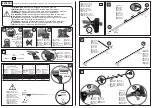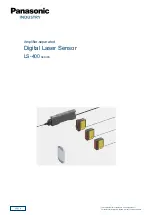
®
M o t i o n S e n s o r I I
C I - 6 7 4 2 A
4
Cart Adapter (f), and other 1/4-20 threaded mounting devices
such as a camera tripod.
To protect the Motion Sensor from being hit by an object, use a
device such as the SE-7256 Motion Sensor Guard (g) or
ME-9806 bracket with a rubber band (h). The Motion Sensor can
“see through” a wire screen or rubber band placed close to the
transducer.
Troubleshooting
If the Motion Sensor fails to perform satisfactorily, try these
steps:
•
Ensure that the target object is no closer than 15 cm.
•
Switch the range switch to the other setting.
•
Adjust the aim left, right, up, or down. In some cases the
Motion Sensor works best when it is aimed slightly to the
side or above the target in order to exclude interfering
objects.
•
Improve the target by adding a larger or harder surface to
reflect ultrasound. A small object can be a better reflector
than large object if it has a harder surface.
•
Remove interfering objects near the target object or sensor.
•
Increase or decrease the sample rate.
Theory of Operation
The Motion Sensor uses an electrostatic transducer as both a
speaker and a microphone. When triggered by the interface, the
transducer transmits a burst of 16 ultrasonic pluses with a fre-
quency of about 49 kHz. This burst of pulses can be heard as a
single click. The ultrasonic pulses reflect off an object and return
to the sensor. The target indicator on the sensor flashes when
transducer detects an echo.
Sound intensity decreases with distance; to compensate, the sen-
sor increases the gain of the receiver amplifier as it waits for the
echo. The increased gain allows the sensor to detect an object up
to 8 m away. The lower gain at the beginning of the cycle reduces
the circuit's sensitivity to echoes from false targets.
The interface measures the time between trigger rising edge and
the echo rising edge. The data acquisition software uses this time
and the speed of sound to calculate the distance to the object. To
determine velocity, the software uses consecutive position mea-
surements to calculate the rate of change of position. Similarly, it
determines acceleration using consecutive velocity measure-
ments.
(a)
(b)
(c)
(d)
(e)
(f)
(g)
(h)























